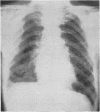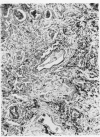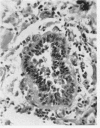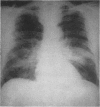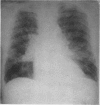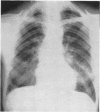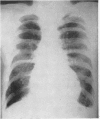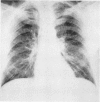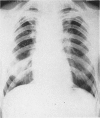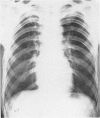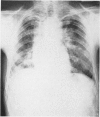Abstract
In Great Britain there have been no published reports of respiratory disease occurring amongst workers in the hard metal (tungsten carbide) industry. In this paper the clinical and radiological findings in six cases and the pathological findings in one are described. In two cases physiological studies indicated mild alveolar diffusion defects. Histological examination in a fatal case revealed diffuse pulmonary interstitial fibrosis with marked peribronchial and perivascular fibrosis and bronchial epithelial hyperplasia and metaplasia. Radiological surveys revealed the sporadic occurrence and low incidence of the disease. The alterations in respiratory mechanics which occurred in two workers following a day's exposure to dust are described. Airborne dust concentrations are given.
The industrial process is outlined and the literature is reviewed. The toxicity of the metals is discussed, and our findings are compared with those reported from Europe and the United States.
We are of the opinion that the changes which we would describe as hard metal disease are caused by the inhalation of dust at work and that the component responsible may be cobalt.
Full text
PDF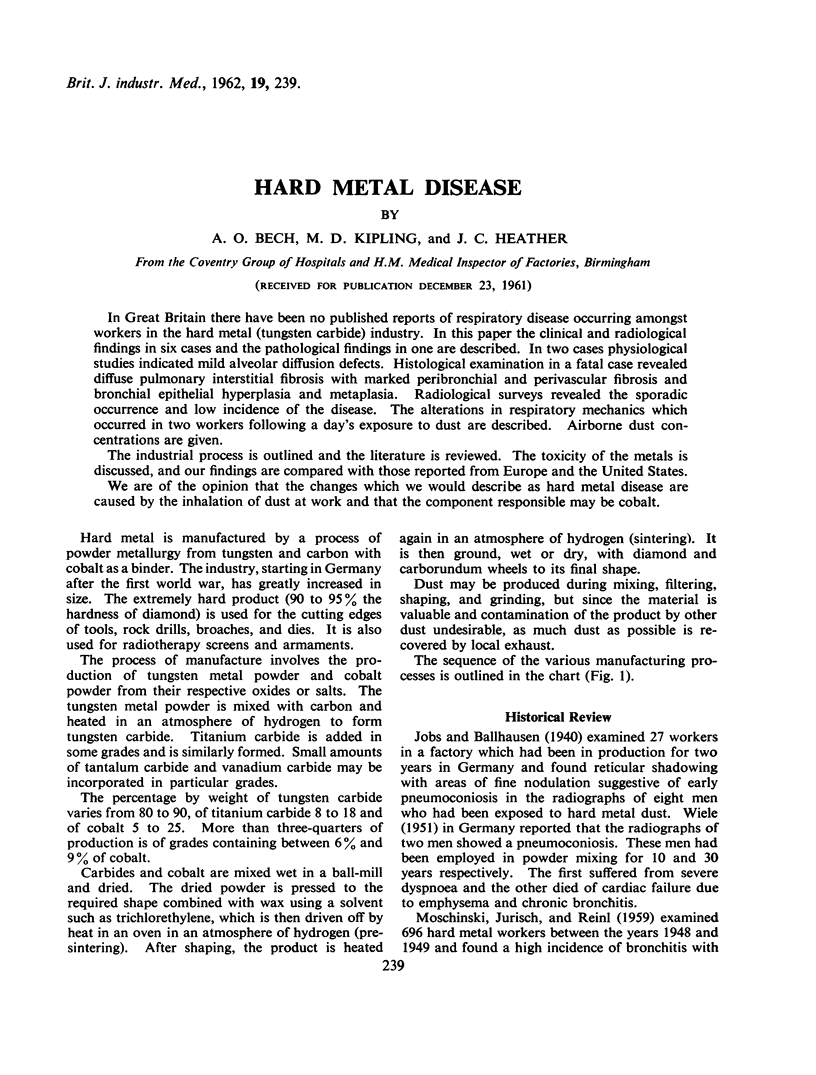
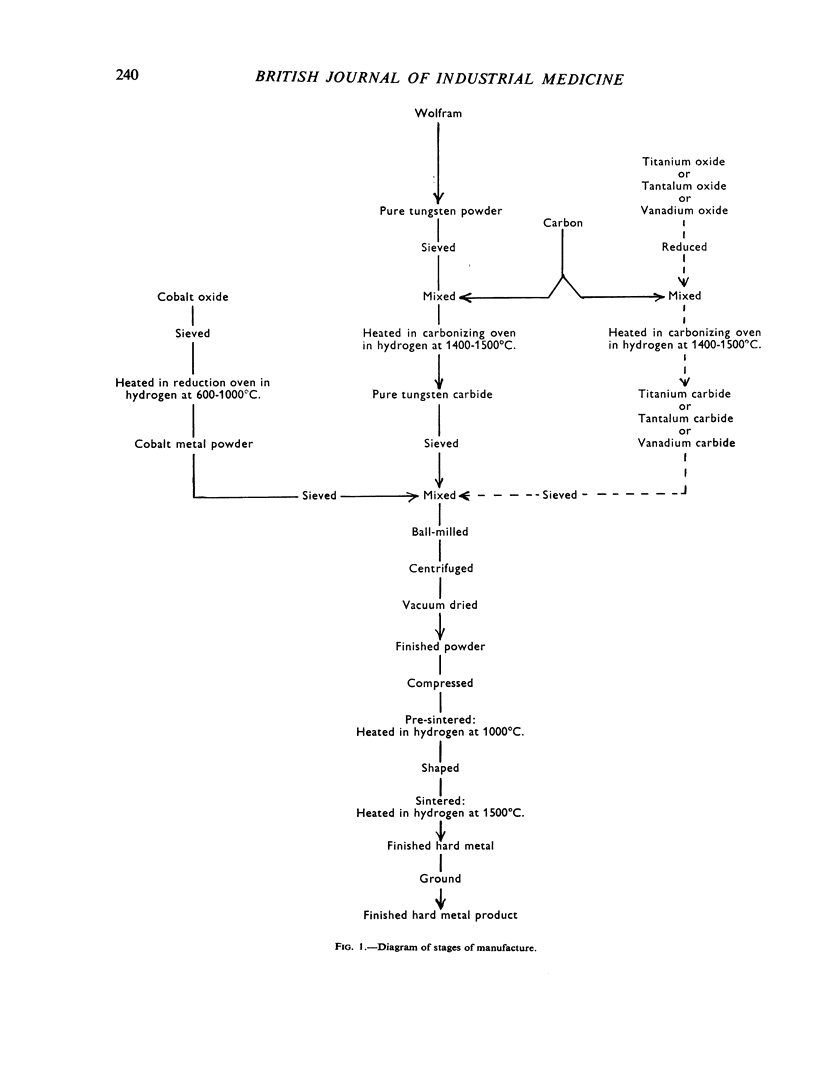
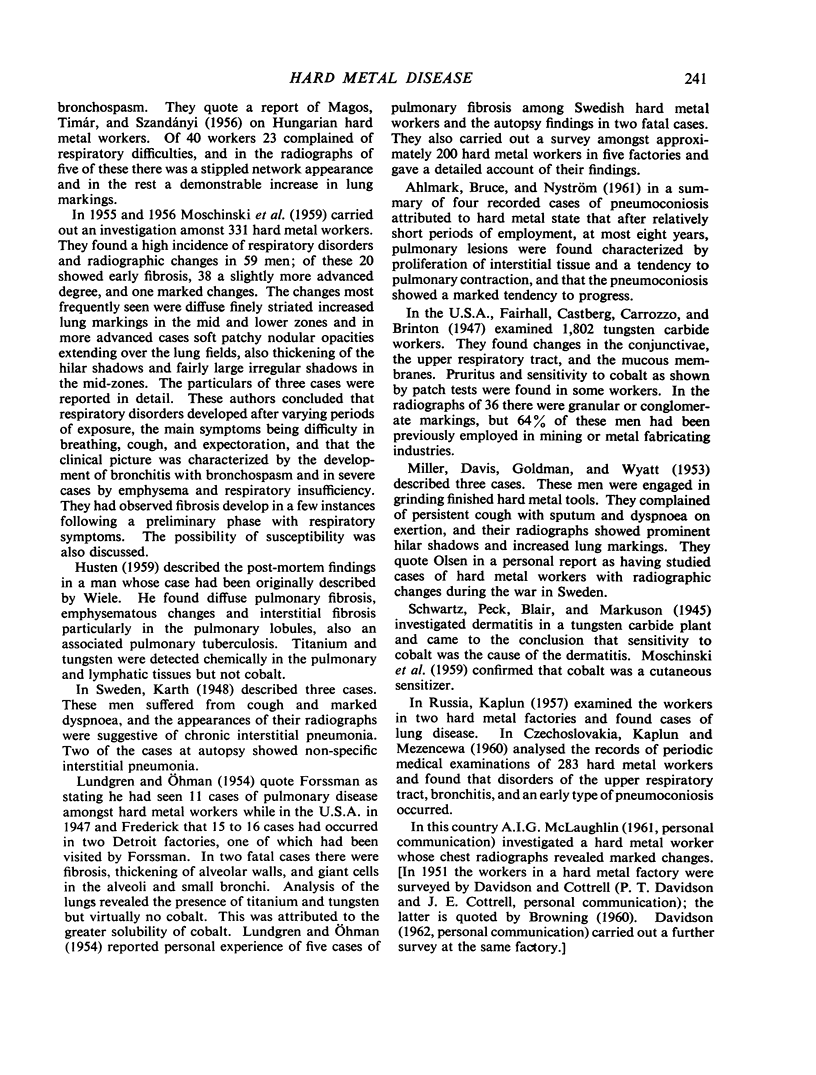
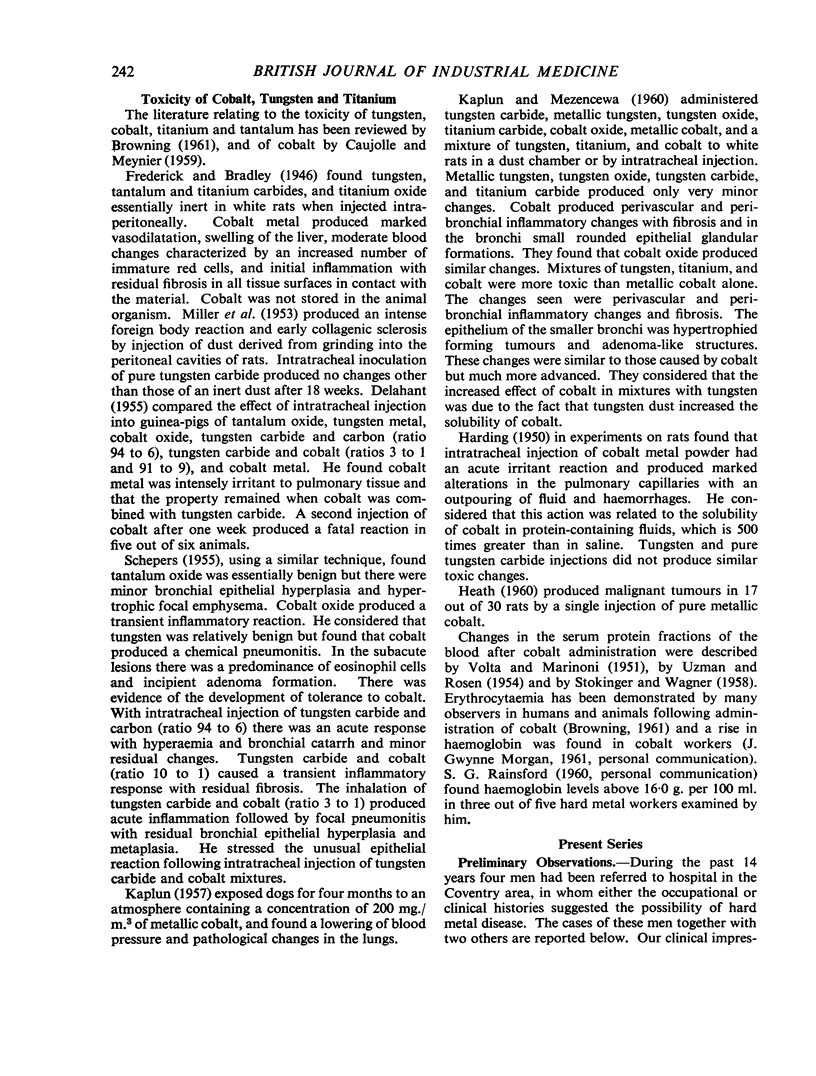
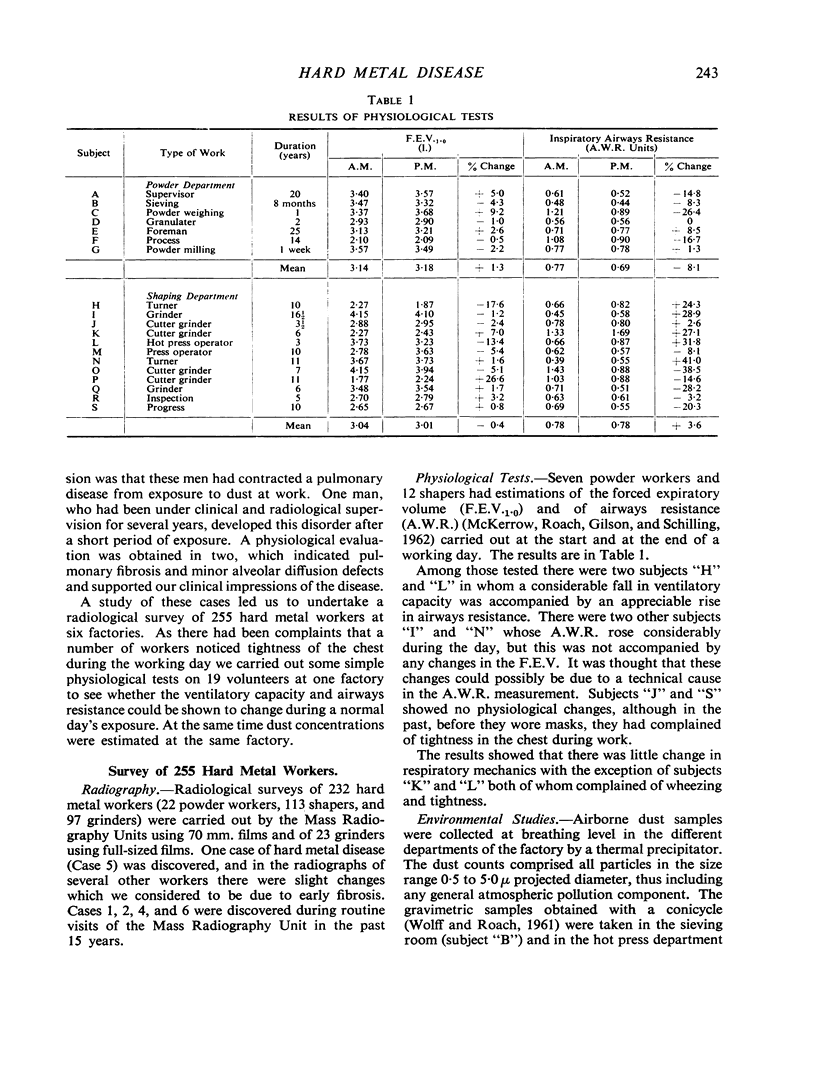

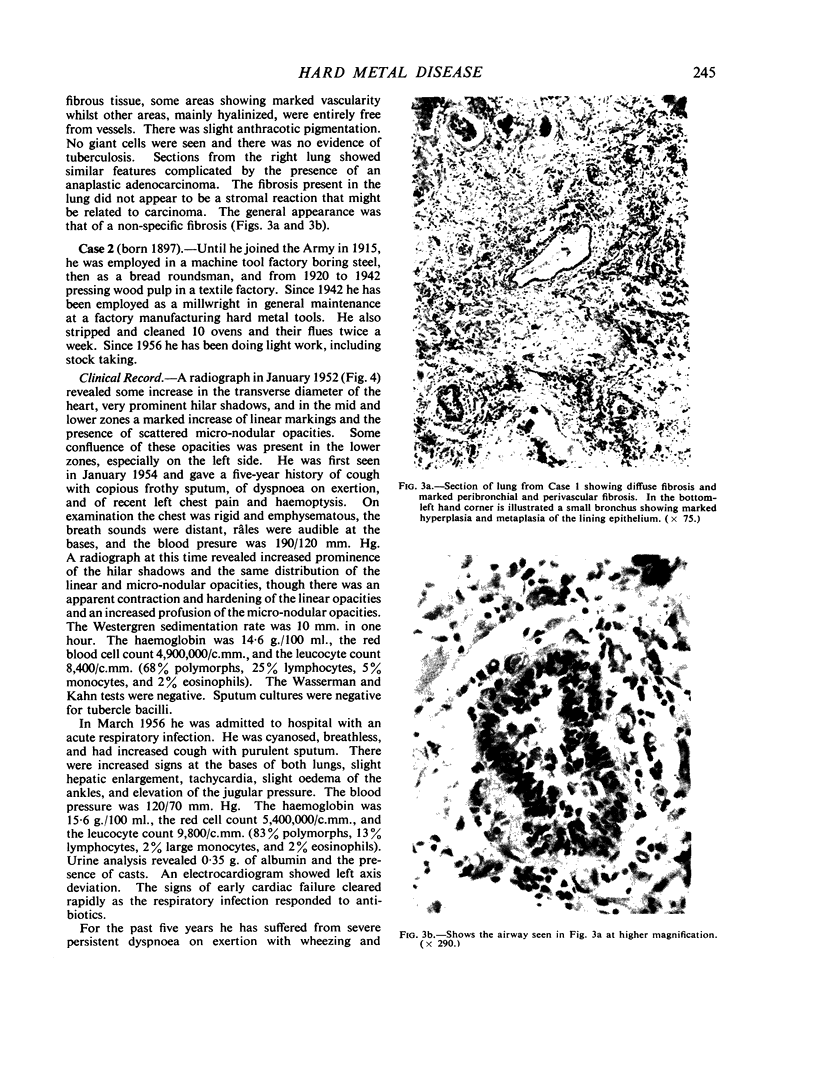
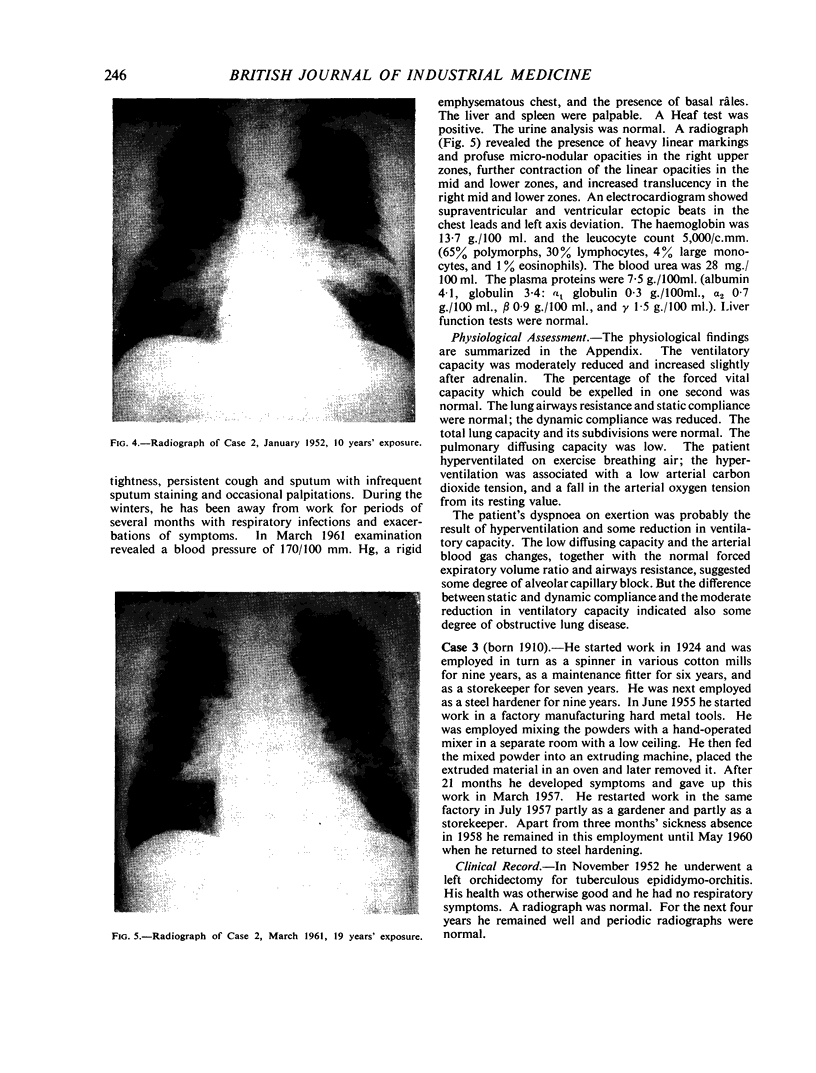
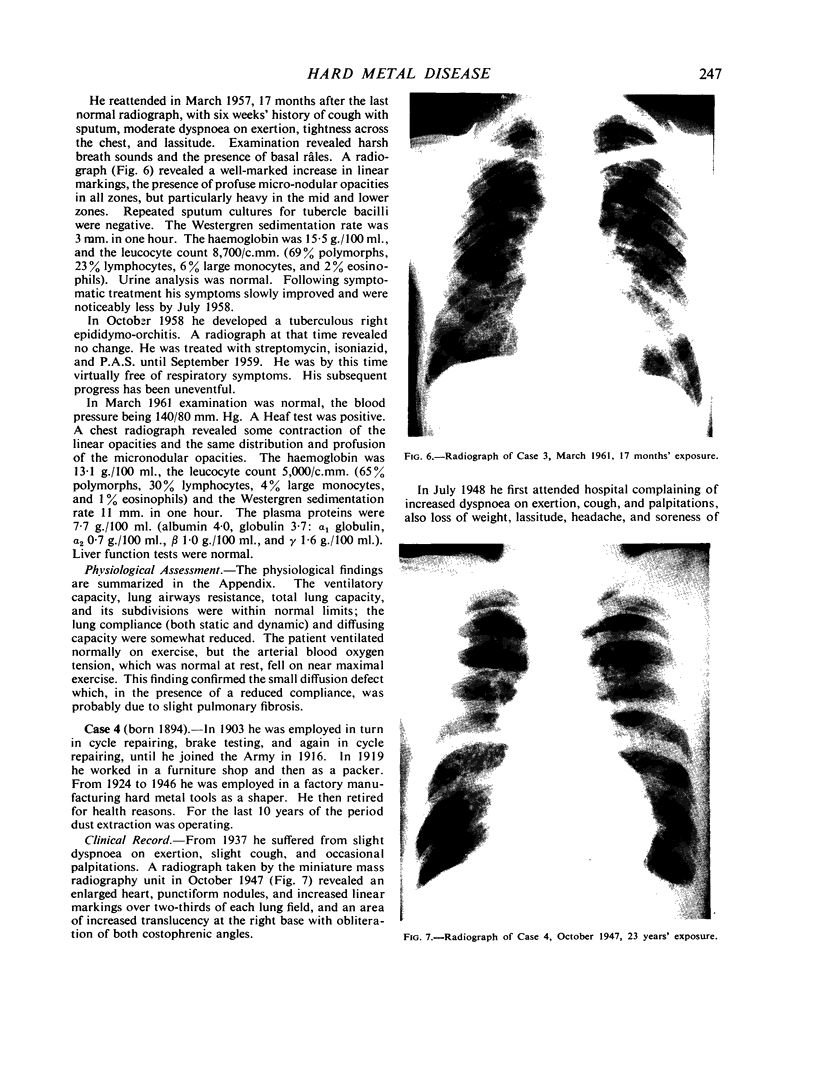
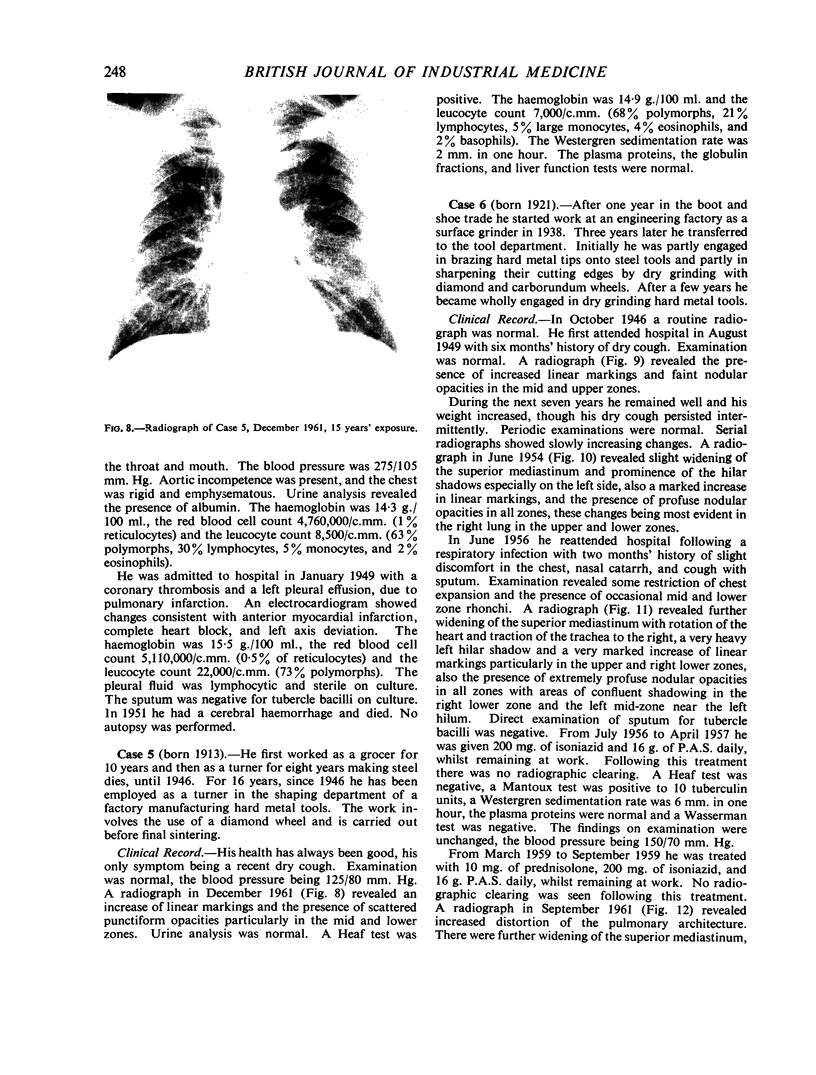
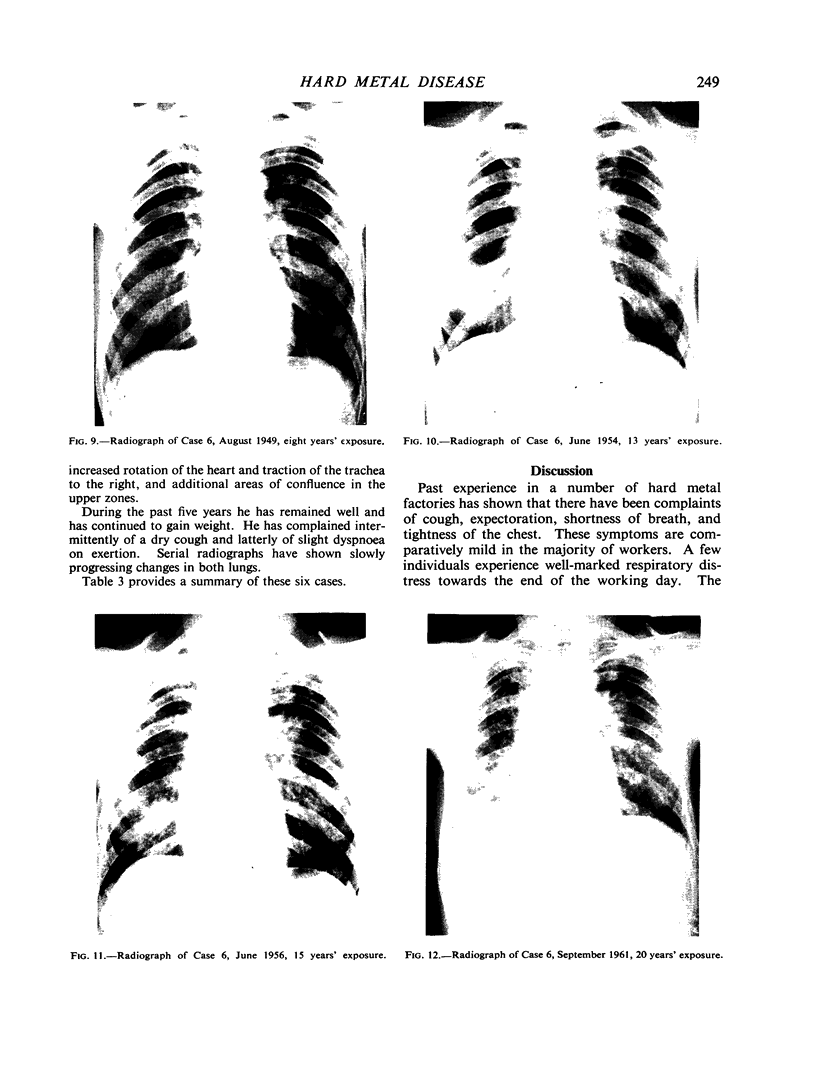
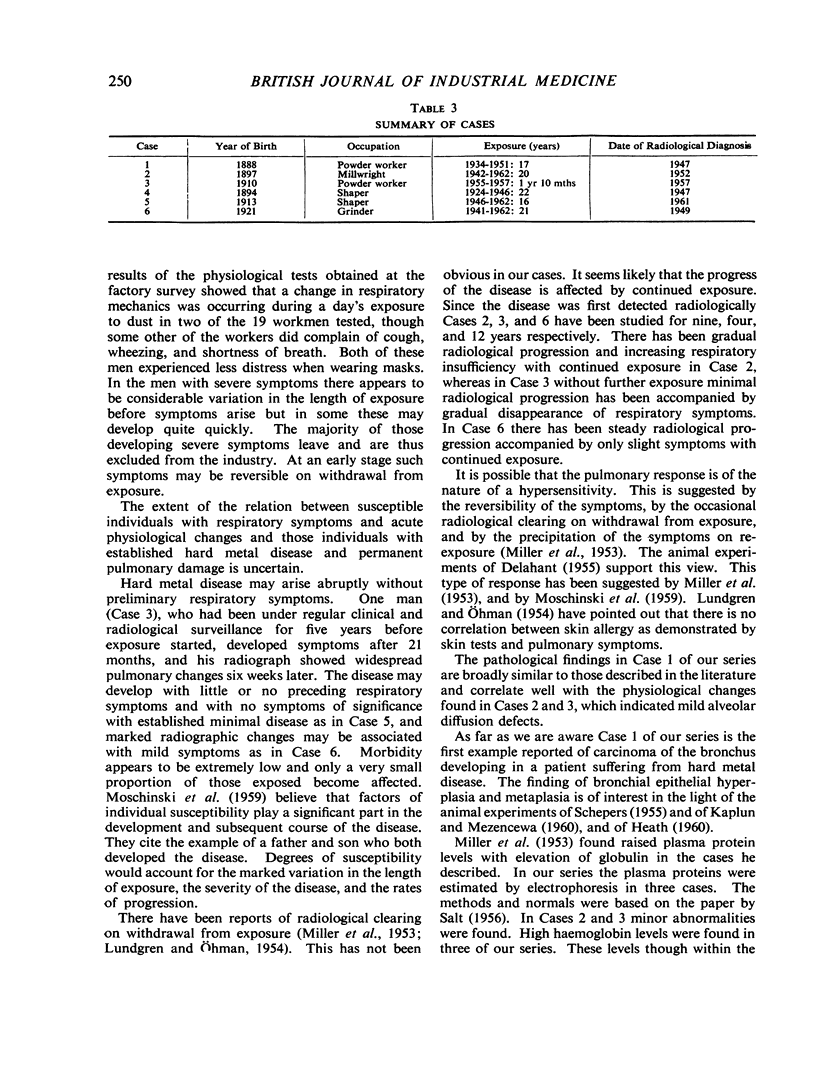

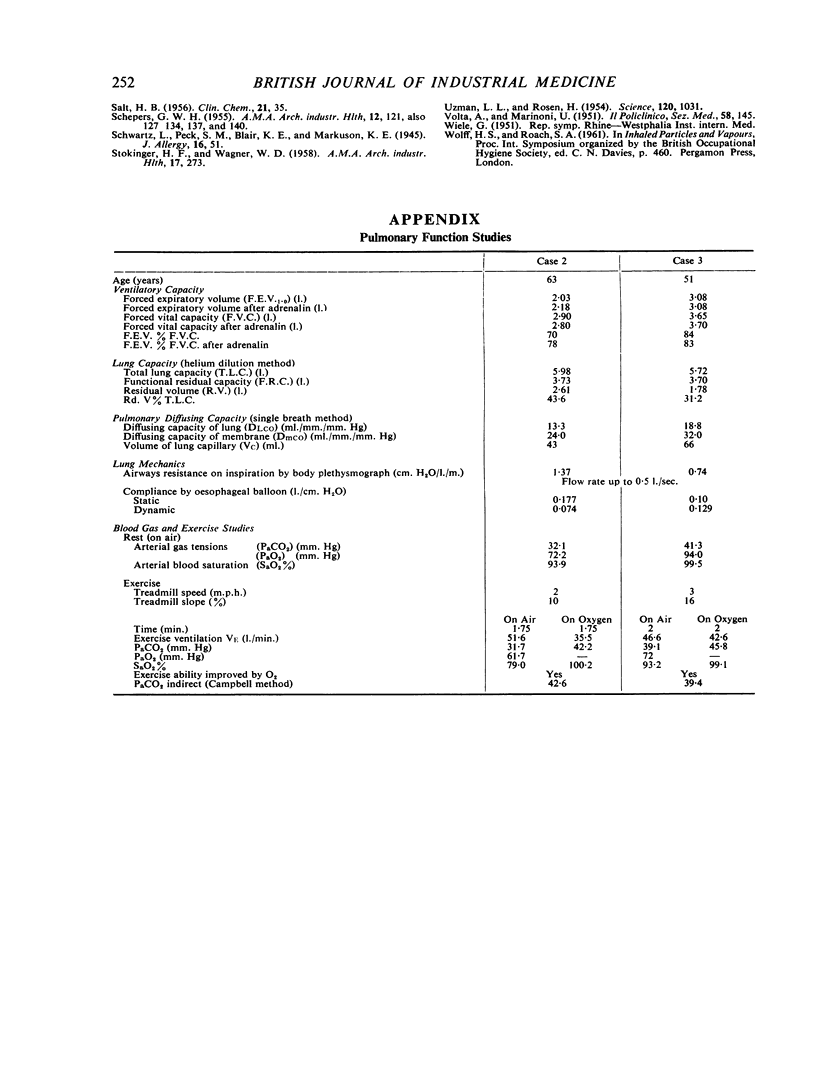
Images in this article
Selected References
These references are in PubMed. This may not be the complete list of references from this article.
- CAUJOLLE F., MEYNIER D. Sur la toxicité du cobalt. Rev Pathol Gen Physiol Clin. 1959 Feb;59(705):245–255. [PubMed] [Google Scholar]
- HEATH J. C. The histogenesis of malignant tumours induced by cobalt in the rat. Br J Cancer. 1960 Sep;14:478–482. doi: 10.1038/bjc.1960.52. [DOI] [PMC free article] [PubMed] [Google Scholar]
- LUNDGREN K. D., OHMAN H. Pneumokoniose in der Hartmetallindustrie; technische und medizinische Untersuchungen. Virchows Arch Pathol Anat Physiol Klin Med. 1954;325(3):259–284. doi: 10.1007/BF00958447. [DOI] [PubMed] [Google Scholar]
- MILLER C. W., DAVIS M. W., GOLDMAN A., WYATT J. P. Pneumoconiosis in the tungsten-carbide tool industry; report of three cases. AMA Arch Ind Hyg Occup Med. 1953 Nov;8(5):453–465. [PubMed] [Google Scholar]
- NAGELSCHMIDT G. The relation between lung dust and lung pathology in pneumoconiosis. Br J Ind Med. 1960 Oct;17:247–259. doi: 10.1136/oem.17.4.247. [DOI] [PMC free article] [PubMed] [Google Scholar]
- SALT H. B. Serum globulin fractions in chronic rheumatic diseases; an electrophoretic study. Clin Chem. 1956 Feb;2(1):35–44. [PubMed] [Google Scholar]
- STOKINGER H. E., WAGNER W. D. Early metabolic changes following cobalt exposure; elevations in serum alpha globulins and serum neuraminic acid. AMA Arch Ind Health. 1958 Apr;17(4):273–279. [PubMed] [Google Scholar]
- UZMAN L. L., ROSEN H. Partition of neuraminic acid among human serum proteins. Science. 1954 Dec 17;120(3129):1031–1032. doi: 10.1126/science.120.3129.1031. [DOI] [PubMed] [Google Scholar]
- VOLTA A., MARINONI U. Ricerche sul comportamento della crasi proteica plasmatica nella poliglobulia sperimentale da cobalto. Policlinico Med. 1951 Jun;58(3):145–171. [PubMed] [Google Scholar]



